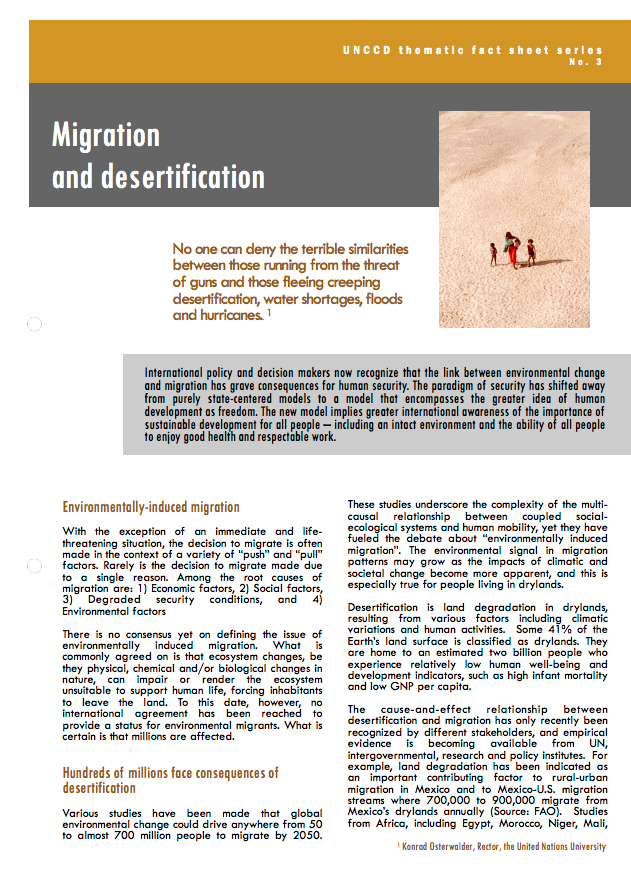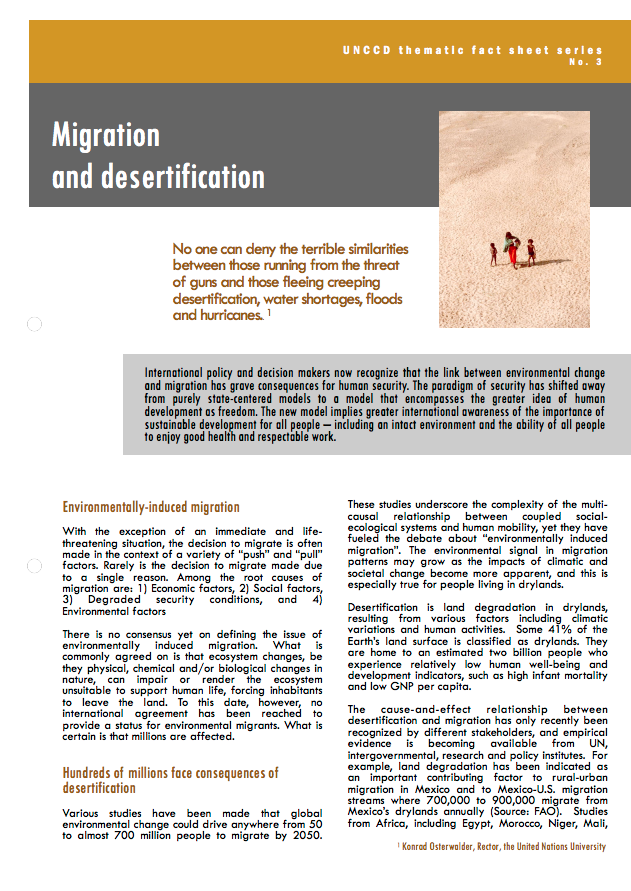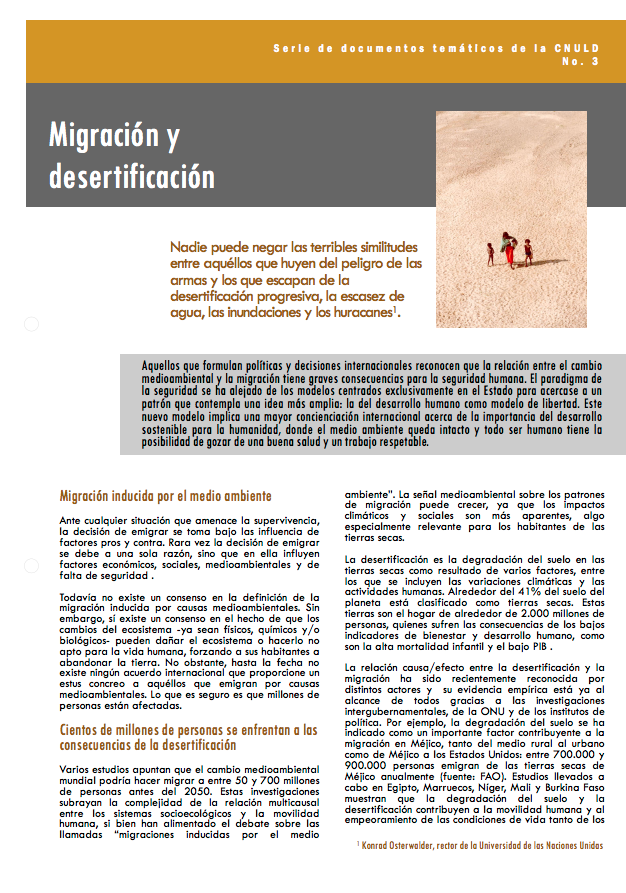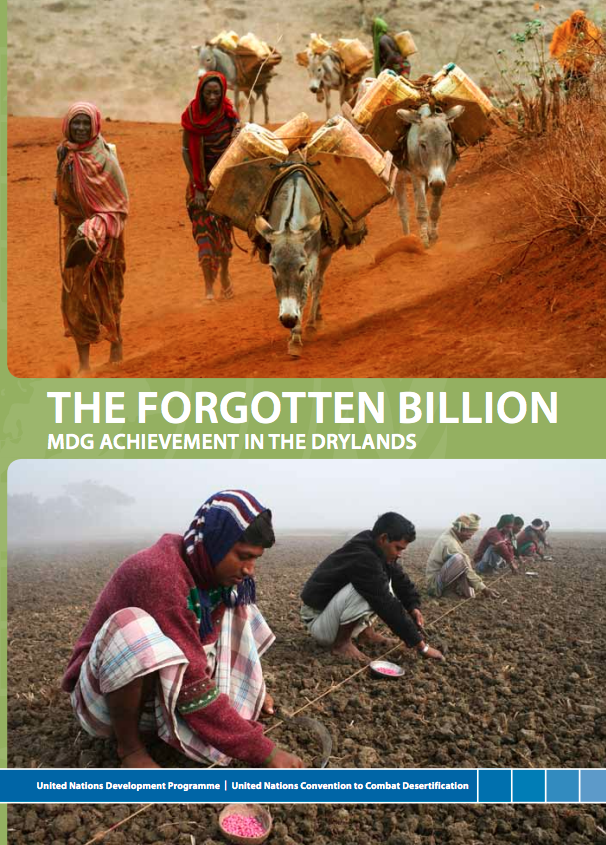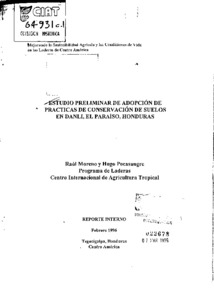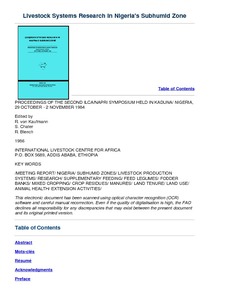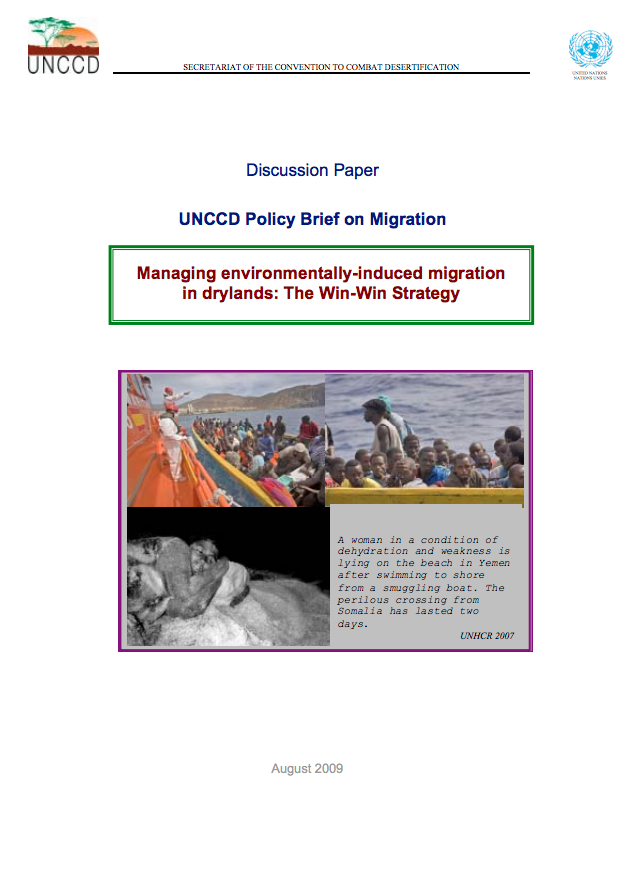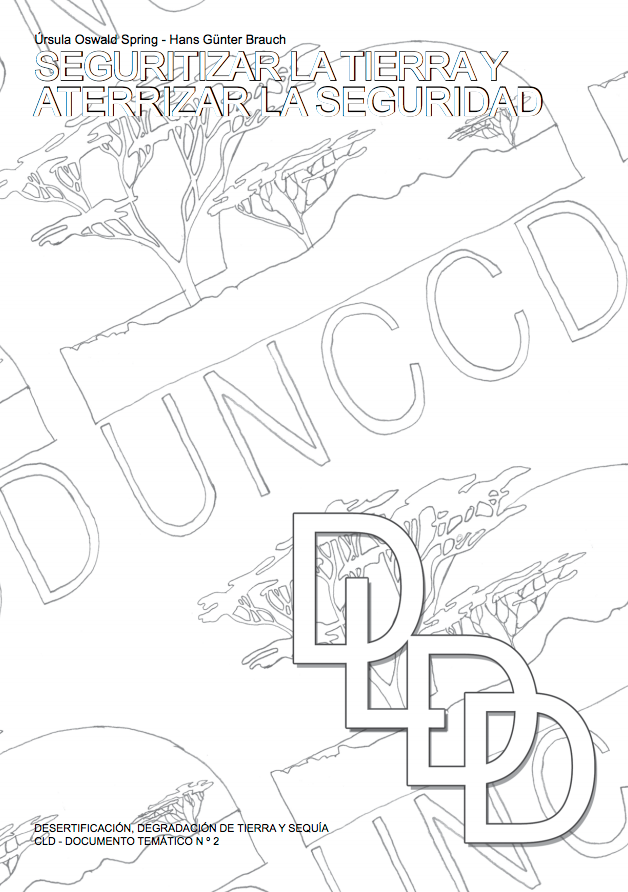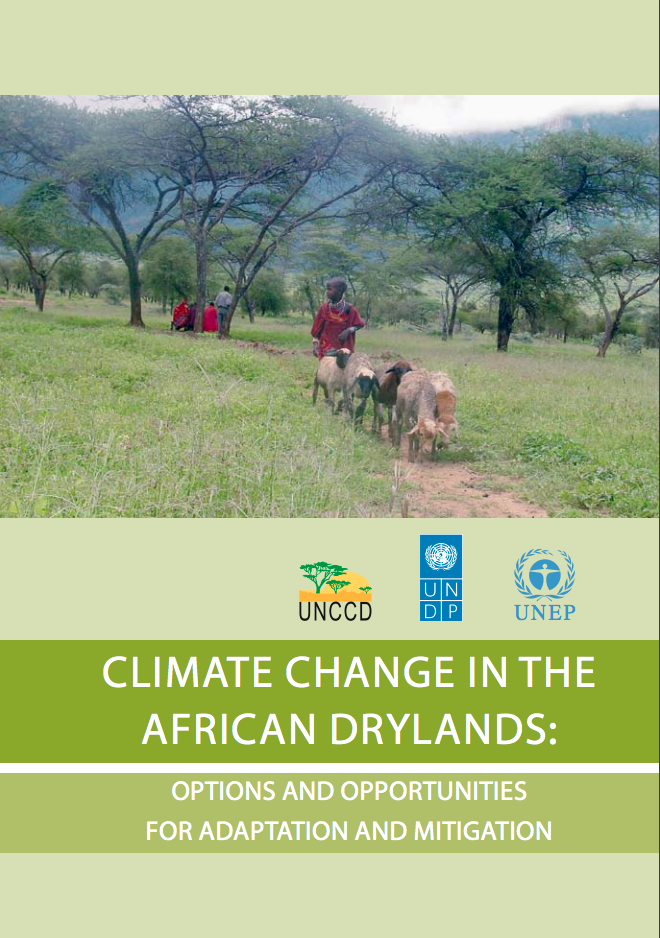Migration and desertification
International policy and decision makers now recognize that the link between environmental change and migration has grave consequences for human security. The paradigm of security has shifted away from purely state-centered models to a model that encompasses the greater idea of human development as freedom. The new model implies greater international awareness of the importance of sustainable development for all people – including an intact environment and the ability of all people to enjoy good health and respectable work.

